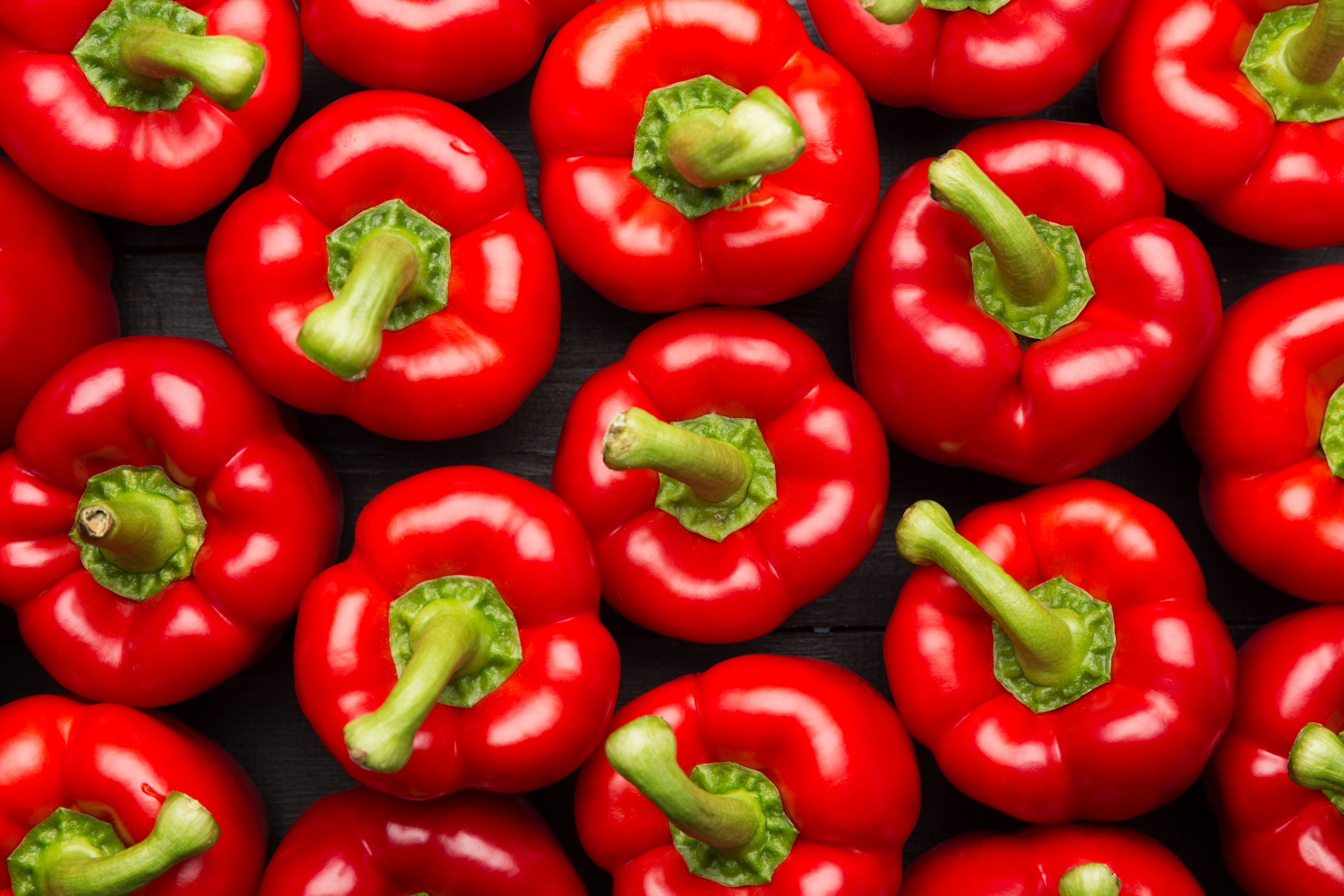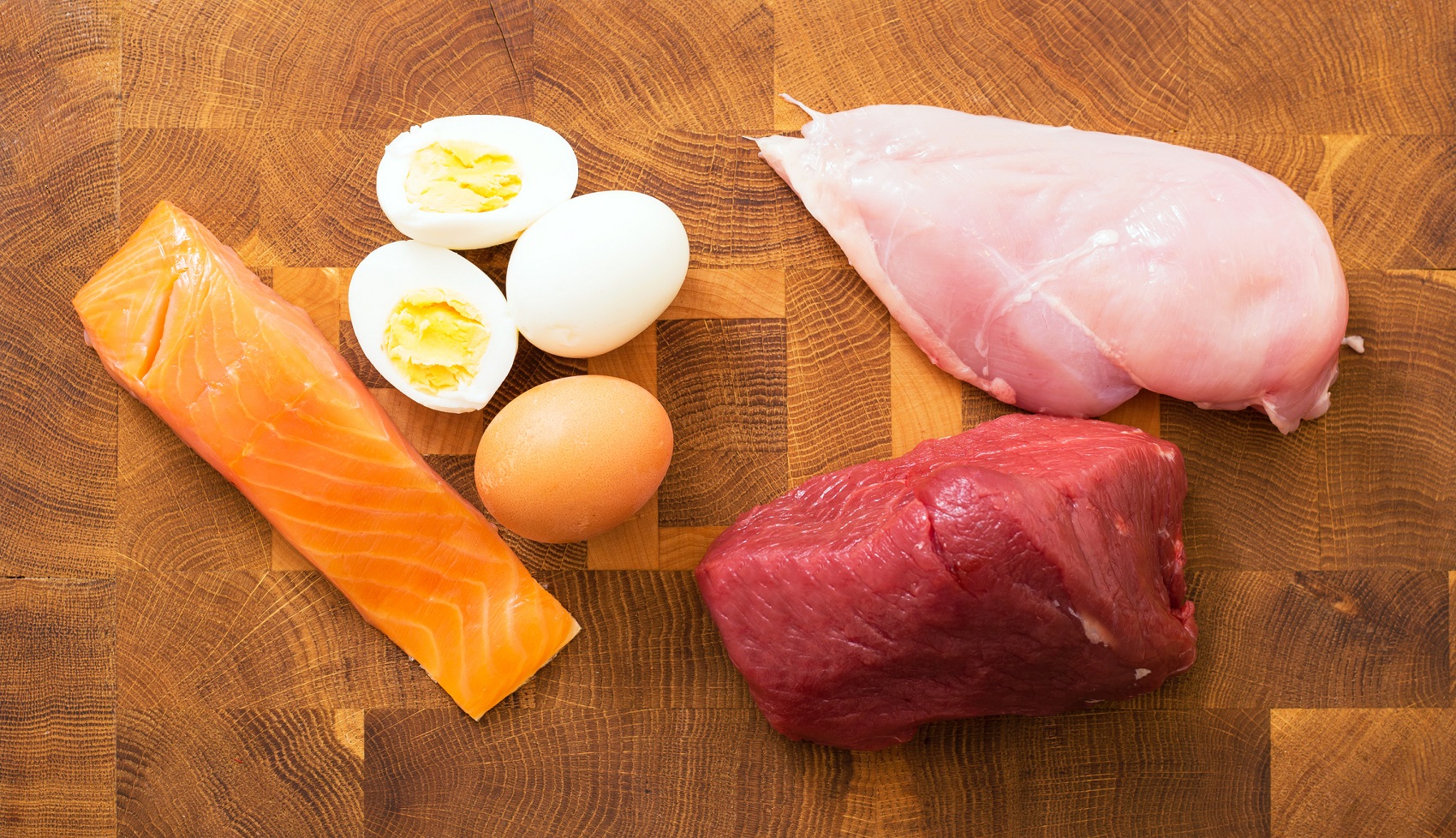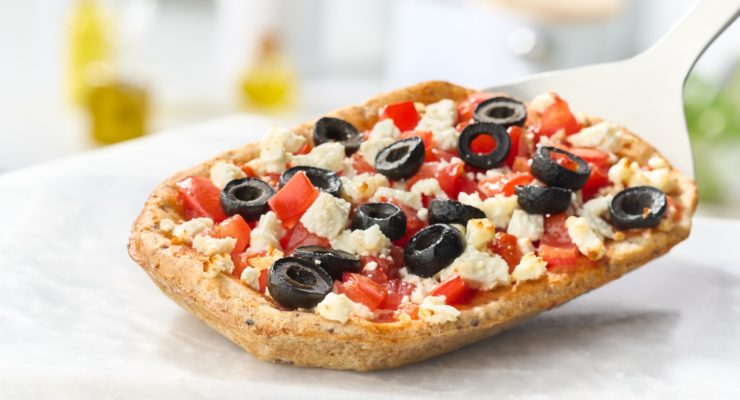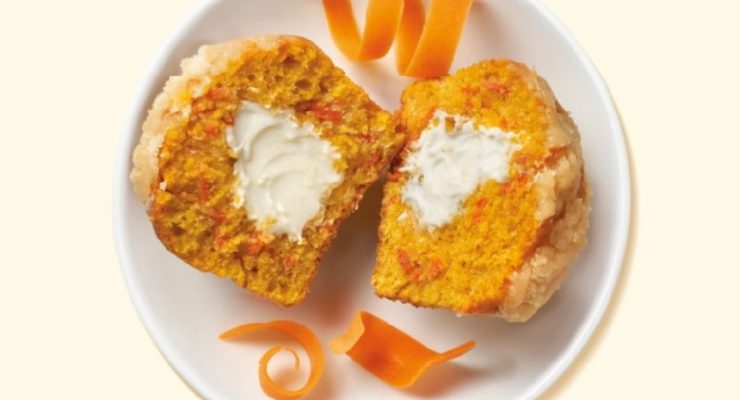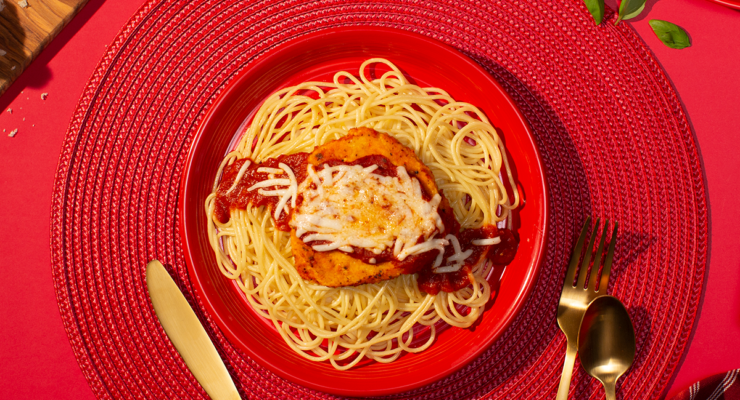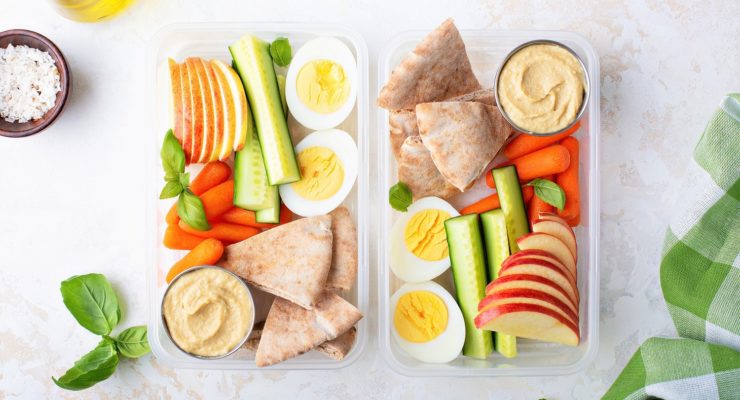The Nutrisystem Grocery Shopping Guide
Article posted in: Nutrisystem for MenThe reason so many people have success with Nutrisystem is that it’s much more than a weight loss program. Your mind and body learn a whole new way of eating that leads you to your goal and teaches you how to maintain your healthy weight for the rest of your life. You start learning the skills you will need right away with our helpful Grocery Guide.
All Nutrisystem plans require the addition of fresh grocery items. This Grocery Guide of healthy foods helps to supplement your Nutrisystem meals and snacks. Every week, you’ll be adding in PowerFuels, SmartCarbs, Non-Starchy Vegetables, Extras and Free Foods.
Don’t worry, Nutrisystem is with you every step of the way. Before you shop, print out our handy Grocery Guide which explains how to identify these add-ins and provides examples of each category. It even shows you recommended portion sizes, so you can buy just what you need!
Click here to view the full Nutrisystem Grocery Guide! >
Read to hit the grocery story?
To help you make the healthiest choices, we’ve got tips and tricks for navigating every section of the grocery store and how to choose foods that fit your Nutrisystem plan:
Produce

Stock up on non-starchy vegetables in the produce aisle! They are unlimited on Nutrisystem, so fill your cart with your faves. Busy schedule? Look for convenient options like pre-cut and washed veggies and salad mixed.
Fresh fruits make the perfect SmartCarbs. Berries and fruits with the peel left on like apples or pears are packed with fiber. Fruit is a great option when you’ve got a sweet craving.
Starchy veggies like potatoes, corn and peas often get a bad rap, but don’t be afraid! They contribute valuable vitamins, minerals and fiber, making them a great SmartCarb choice.
Pro Tip: Choose fruits and veggies that you are familiar with and enjoy. Try to fill your cart mostly with the produce that you like best. Why? Because the “healthiest” vegetables are the ones you will ACTUALLY eat. Feeling adventurous? Have some fun and try one to two new vegetables each week.
Frozen Foods

The frozen food aisle provides many great alternatives to fresh produce. Frozen fruits and vegetables can be stored for a few months in your freezer and are typically flash frozen at the peak of ripeness. Add frozen fruit to smoothies or as a topping on yogurt. Frozen vegetables are great for a quick side dish. When choosing frozen fruits and veggies, look for varieties that contain few additional ingredients. Try to limit those with added sugars or high-sodium and high fat sauces.
Pre-cooked whole grains like quinoa and brown rice are major time-savers. Just be sure to look for the unseasoned or unflavored versions to cut down on sodium and saturated fats. Or, make your own. Cook a large batch of whole grains, like brown rice, and pre-portion them out into freezer bags. Pop in the freezer to have on hand for those busy nights.
Frozen seafood like cod, tilapia and shellfish is a handy source of lean protein. They count as PowerFuels on Nutrisystem. Just be sure to stick with the plain versions. Frozen seafood is also typically cheaper than fresh, making it a great money-saving alternative.
Meat, Poultry and Meat Alternatives

Choose healthy, lean protein choices in the meat aisle and deli counter. This includes cuts of meat with less visible fat or marbling, skinless chicken and turkey, or ground meats that are 90 – 95% lean.
Fish and seafood make a great lean protein choice, too. Try to eat fish or seafood at least 2 times per week. Adding canned or pouched options like tuna or salmon can be a convenient and cost-effective way to eat more fish. Top your salad with canned salmon or serve canned tuna with celery sticks for a snack.
If you’re looking to enjoy more meatless options, many stores have a large selection of vegetarian, plant-based protein sources. Foods like tofu, tempeh and seitan are all great plant-based PowerFuel options.
Bread and Cereal

Take some time and read the labels on bread in the bread aisle. Look for fiber; the more the better! Whole grain options will provide more fiber and protein than those containing refined grains. Always check the ingredient list. Look for options that list “whole wheat” or “whole grain” as the first ingredient. Choosing thinner sliced whole grain bread, bagels or English Muffins can help you stay within your calorie limits for a SmartCarb.
Pro Tip: While you only need at least 1 gram of fiber to count as a SmartCarb, when it comes to grains like bread, we recommend finding options that provide at least 3 grams of fiber per serving.
The best cereals are SmartCarbs that have the highest amount of fiber and the least amount of sugar per serving. When comparing the nutrition labels in the cereal aisle, be sure to take note of serving size differences. Plain oatmeal is also a great cereal option that’s rich in fiber and super satisfying.
Eggs and Dairy

Try to stick with low-fat milk options when you’re shopping in the dairy aisle.
Many yogurt varieties contain a lot of added sugars, so check the labels to compare. Sticking to plain, unflavored yogurts can help you reduce added sugar. You can add your own fruits or spices like cinnamon to naturally add sweetness and flavor.
You don’t have to restrict yourself to fat-free yogurt. Eating 1% or 2% versions can be more filling and satisfying.
Choose lower-fat cheeses: Look for the words “2% milk”, “part-skim”, “lite”, or “reduced-fat” on the package. Cottage cheese makes a great option that packs in a lot of protein. Pre-portioned cheese like string cheese adds protein for grab-and-go snacking.
Dairy free? Soy, almond, oat or coconut milks can fit into Nutrisystem. However, it’s important to read the labels. They can contain less protein and calories and sometimes more sugar. Unless they are fortified with protein, they will likely count as an Extra and not a PowerFuel.
Eggs make a great PowerFuel because they are inexpensive and pack in a lot of protein. They are also super convenient. You can hard-boil and peel several at the start of each week for meals and snacks.
The Middle Aisles

In the middle aisles, you can stock up on healthy, fiber-filled SmartCarbs like canned beans, whole grain cereals like oatmeal, and whole grains like brown rice and quinoa. Be sure to also grab some healthy fat PowerFuels like nuts, nut butters, seeds and heart-healthy oils like olive oil.
Canned Foods
Canned beans allow you to shortcut the bean cooking process that can take hours. When shopping in the canned goods aisle, be sure to pick low-sodium or sodium-free varieties whenever possible. You can also rinse beans in water before eating them to help remove some of the salt. They are a great fiber-rich SmartCarb that also serves up some satisfying protein.
Canned vegetables and fruits are great in those months when they’re not in season. Canned veggies are handy when you want to heat up one of your four daily vegetable servings in a hurry. They also tend to be a great value when compared to fresh veggies. Just like beans, make sure to choose products with no or low sodium.
Check the labels on canned fruit and avoid varieties that are packaged with “syrup.” Go for canned fruits that are packed in 100 percent fruit juice or water.
Pasta and Rice
Supermarkets today carry many more options than the old standard noodle in the pasta and rice aisle. That’s good news for your weight loss. You’ll barely notice a difference in taste or texture with whole wheat pasta, which has about 25 percent of your daily fiber needs in a half-cup serving, says the United States Department of Agriculture (USDA). For even more fiber and nutrition, try noodles made from chickpeas, lentils and high-protein grains like spelt or buckwheat. They are all considered SmartCarbs on Nutrisystem.
Skip white rice that has been stripped of its fiber and other nutrients. This process leaves behind only the starchy grain. Brown rice, a SmartCarb, is less processed and provides you with fiber. You may have heard that brown rice takes a lot of time to cook. However, nowadays you can find products that are ready in 20 minutes or less.
Nuts and Nut Butters
Look for natural nut butters without any added sugar. Roasted, unsalted almonds, pistachios in the shell, and walnuts are heart smart and make great PowerFuel snacks. Buy a large bag and pre-portion them out into small bags.
Cooking Oils, Salad Dressings and Condiments
Cooking oils and salad dressings make for satisfying Extras or PowerFuels, depending on the serving size and fat content. Get oils like olive, sunflower, canola or avocado for cooking and baking.
To add flavor to your foods without all the calories, stock up on Free Foods in the condiment aisle like mustard, vinegar and hot sauce. Condiments with more calories, like ketchup, mayonnaise and maple syrup are considered Extras on Nutrisystem. You can enjoy them, but watch your portion sizes!
Pro Tip: Because there are so many options in these aisles, it is important to read labels for the different brands of products and try to maximize the protein in your PowerFuels and fiber in your SmartCarb choices.
Herbs, Spices and Sweeteners
You can enhance the flavor of your meals and snacks with generous amounts of seasonings often found in the baking aisle. Oregano, cinnamon, red pepper flakes, garlic powder and other herbs and spices are considered Free Foods on the Nutrisystem program. Get creative and experiment with your favorite flavors.
If you need to sweeten a dish, consider using zero-calorie natural sweeteners like stevia, monk fruit extract or sugar alcohols. You can also use a small amount of honey, agave, coconut sugar or maple syrup. Just be sure to stick to the recommended serving sizes and count these towards your Extras for the day.
Beverages

We recommend sipping on water all day long. It’s naturally good for you and helps you feel full! Aim to drink at last 64 oz. (8 cups) of water or other calorie-free drinks each day. That can come straight from the tap. However, if you prefer bottled water for convenience or taste, you can choose just about any type that you like from the beverage aisle. This includes spring, mineral and sparkling waters. Whichever you choose, skip any with added sugar or other sources of extra calories.
Pro Tip: Add lemon wedges, cucumber slices or mint leaves for flavor.
In addition to water, you can enjoy these calorie-free beverages:
- Black coffee
- Iced tea, unsweetened
- Seltzer, plain or flavored
- Tea, all varieties, including black, green, or herbal
You can also enjoy other popular beverages, such as 100% fruit juice, different types of milk, and coconut water. Just be sure to stick to proper serving sizes! Check out the list of popular drinks below and how to count them on your Nutrisystem plan:
- 1 cup (8 fl. oz.) almond milk with added protein = 1 PowerFuel
- 1 cup (8 fl. oz.) fat-free/skim or low-fat milk = 1 PowerFuel
- 1 serving Nutrisystem Protein Shake = 1 PowerFuel
- 1 cup (8 fl. oz.) low-fat soy milk = 1 PowerFuel
- ½ cup (4 fl. oz.) 100% fruit juice = 1 SmartCarb
- ½ cup (4 fl. oz.) low-sodium vegetable juice/V-8 = 1 Vegetable
- 1 cup unsweetened almond milk = 1 Extra

